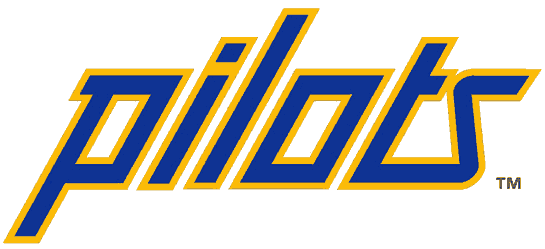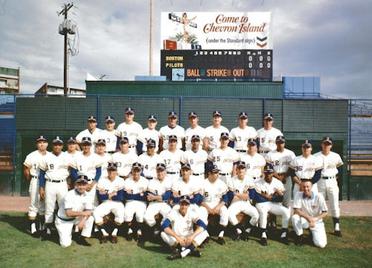
Seattle’s (Not Quite) Forgotten First Major League Baseball Team
This is the story of Seattle’s first Major League team, the beleaguered Pilots. The team’s single (and arguably forgettable) season led to the creation of the Mariners.
To get there, we have to go back to 1903.
Baseball was popular in Seattle even at the turn of the 20th century. Minor league ball, that is. The city was home to the Seattle Rainiers. That team, after briefly being renamed the Indians, would come to be owned by the chairman of the Rainier Brewing Company, Emil Sick.
Sick wanted to show off his team, so in 1937 he built Sick’s Stadium, seating 11,000. The Rainiers stayed popular for several decades, and 11,000 seats were enough for the minors.
In 1965, after a series of sales, the team was renamed the Seattle Angels. 1968 would be their last season. The Angels, once the Rainiers, were no more.
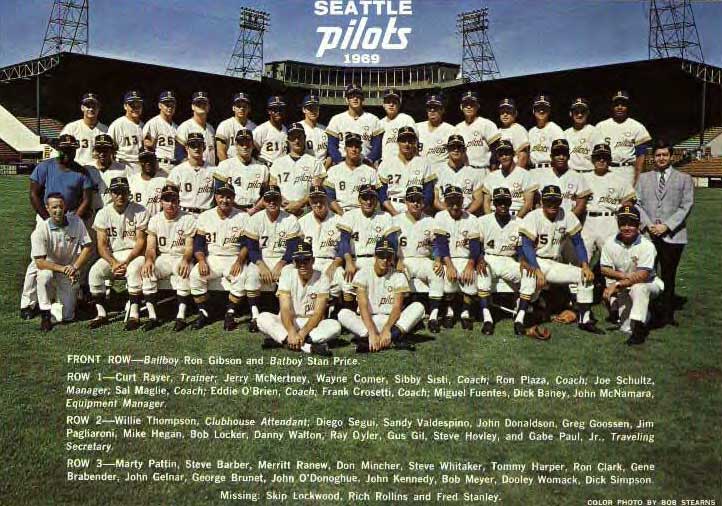
The Seattle Pilots baseball team, seen here during their single seasons in 1969. / Credit: Bob Stearns
But Major League Baseball’s American League was looking to create new teams. They agreed to put a team in Seattle, on condition that the city build a new, domed stadium.
The team? The Pilots.
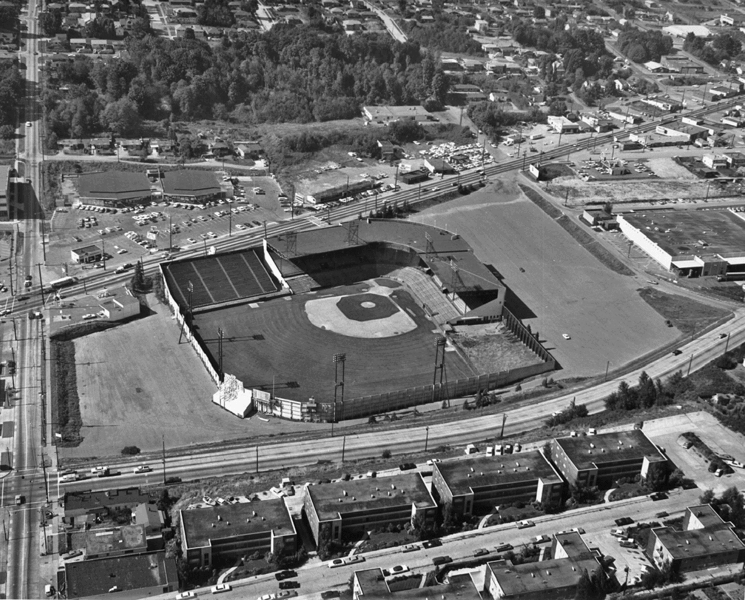
Sick’s Stadium in 1967 / Seattle Municipal Archives
Seattle would need a few years to build the domed stadium, but political pressures within the American League meant the city needed to be ready in less than a year. They only had one place to hold a game: Sick’s Stadium.
The stadium was big enough for the minor league Rainiers, but not the majors. Famous players like Mickey Mantle and Joe DiMaggio came to Seattle to urge city voters to pass a bond expanding Sick’s Stadium. It passed, but bids to expand the stadium came in higher than the city expected.
Eventually they settled on 21,000 seats, much less than the 28,000 they’d hoped for.
Work began in January 1969. They had only three months to complete it. Opening day was April 11. But it was a bad winter, with almost 49 inches of snow by the end of January, more than enough to stop construction.
By opening day, the stadium could hold 17,000. Riding high on an away-game victory, fans flocked to the stadium to see their new home team. Benches were still being installed as the game began. Many had to wait until later innings to get into the stadium. But the Pilots were successful that day, shutting out the Chicago White Sox 11-0 in their first home game. Fans rushed the field.
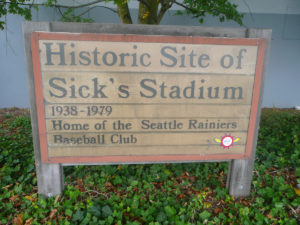
Sign marking the site of Sick’s Stadium, former home of the Seattle Pilots. The sign is situated in front of a Lowe’s home improvement store in Seattle, on Rainier Avenue South / Wikimedia Commons
The popularity wouldn’t last, though. Poor seating led to low attendance. Ticket and concession prices rose, alienating many. The Pilots’ first and last season would end with a losing game, played in the rain.
That same year, they would be sold and become the Milwaukee Brewers. The change happened so quickly there wasn’t time for new uniforms to be made: they would play their first Milwaukee home game in the old Pilots uniforms, with the Brewers’ logo hastily sewn on.
But that wasn’t it for Seattle baseball. In 1970, the city, King County, and the state of Washington sued the American League for $32 million, saying the League had financial commitments to the city that weren’t fulfilled. In Seattle, construction on a new baseball stadium would continue. The lawsuit would drag on for six years.
In March 1976, the city’s new Kingdome was completed, but with no Major League team. Finally, the American League offered the city a deal: drop the suit, and we’ll give you a new baseball team.
That team was, of course, the Seattle Mariners.
Sick’s Stadium was demolished in 1979. Today, the old site is home to a Lowe’s hardware store. Find it in Seattle on Rainier Avenue South on the interactive map below.
Related Stories:

Purpose Boxing Club: A new gym with a mission to uplift youth
Rivaldo Penado, 13, leads a shadow boxing drill at Purpose Boxing Club in Wenatchee. (Credit: Jacob Ford / Wenatchee World) Listen (Runtime 0:52) Read A new nonprofit gym in Wenatchee,
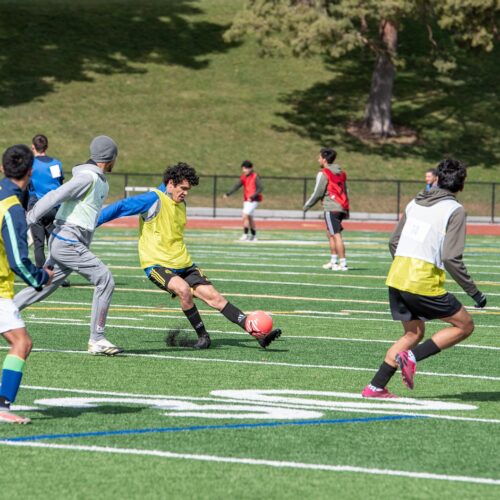
FIFA fan zones excite communities in Tri-Cities, Yakima
Seattle is one of the host cities for the 2026 FIFA World Cup. However, the soccer party will extend to local communities, with fan zones coming to parts of Washington state.

‘The water’s nice today’: One man’s quest to jump in the Columbia River for 25 years
For the past 25 years, Greg Patton has spent at least a few moments each month jumping in the Columbia River. (Credit: Courtney Flatt / Northwest News Network) Listen (Runtime

